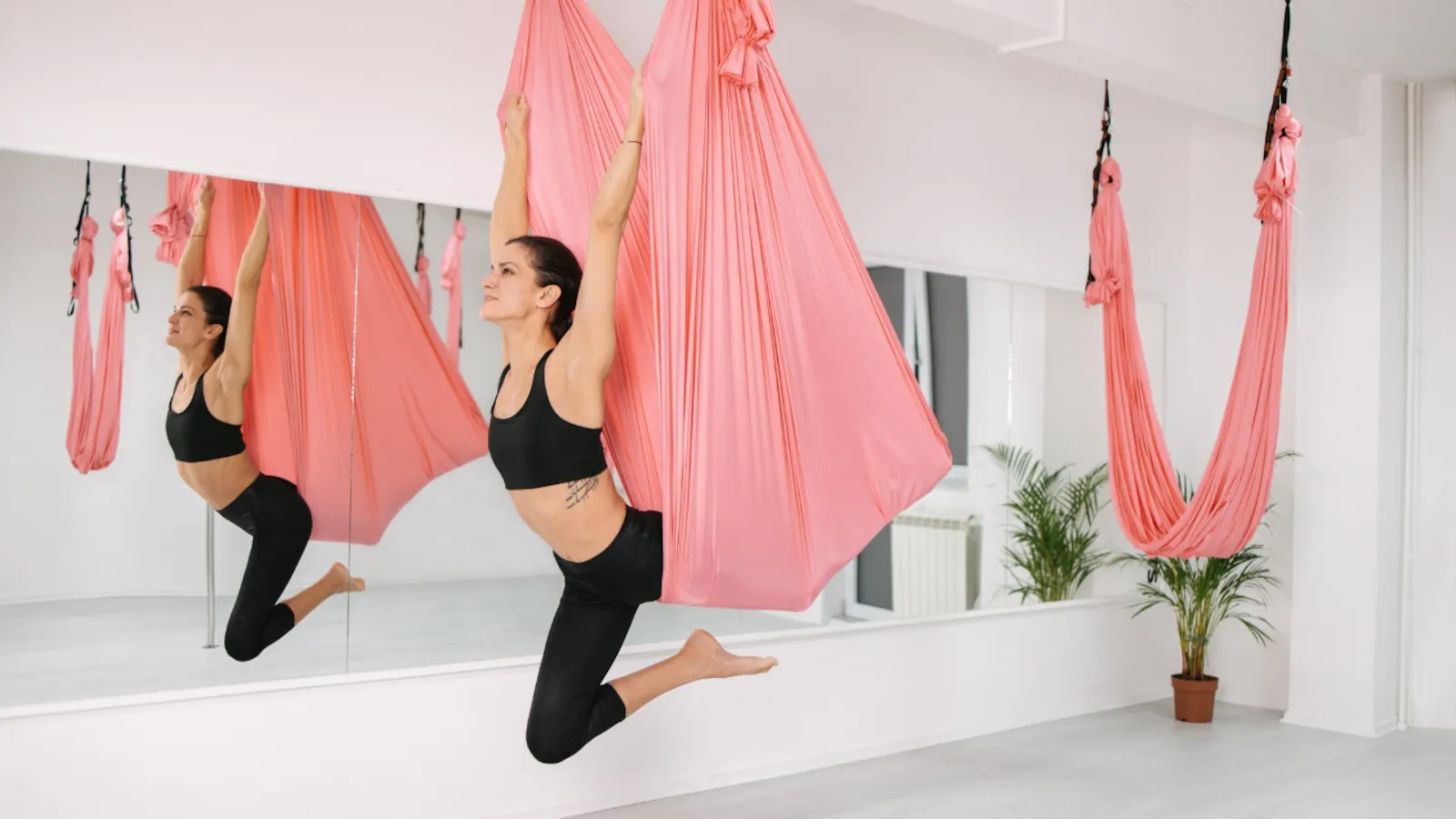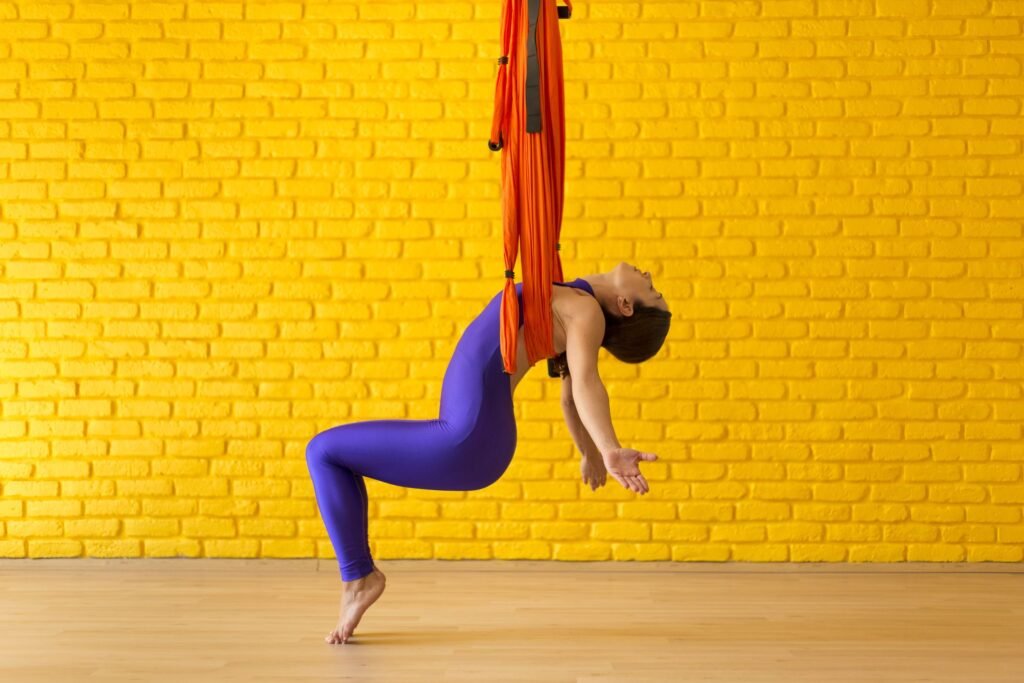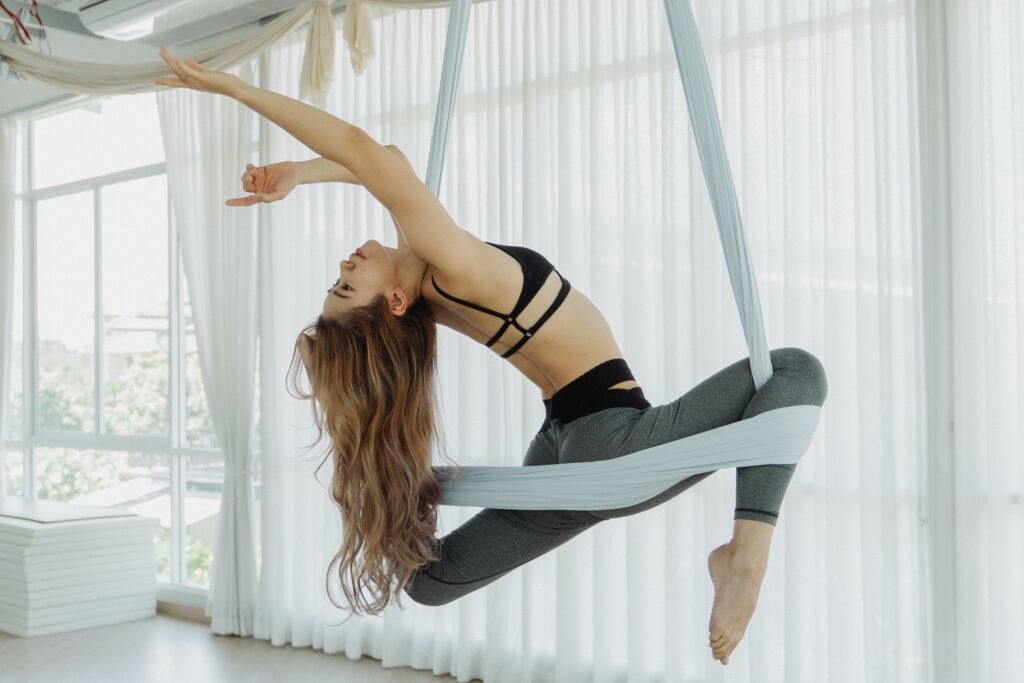What is Aerial Yoga? A Beginner’s Guide


Ever wondered what it feels like to float in the air while flowing through yoga poses? Aerial yoga combines the mindfulness of traditional yoga with the freedom of being suspended in a soft fabric hammock. It’s playful, empowering, and surprisingly accessible- even for complete beginners. Whether you’re looking to deepen your flexibility, relieve back tension, or simply try something new, aerial yoga offers a fresh perspective on movement and mindfulness.
In this guide, we’ll explore what aerial yoga is, its benefits, what to expect in your first class, and why it’s quickly becoming a favorite among yogis and fitness lovers alike.
What Is Aerial Yoga?
Aerial yoga (also called anti-gravity yoga) is a fusion of traditional yoga, Pilates, and dance, practiced with the support of suspended fabric hammock. The hammock is securely anchored from the ceiling and acts as a soft trapeze to support your body weight, allowing you to move more freely, achieve deeper stretches, and even perform gravity-defying inversions- without straining your joints or spine.
What Are the Benefits?
Aerial yoga is more than just visually impressive- here are some key benefits:
- Increased Flexibility: The hammock allows you to stretch more deeply and safely.
- Improved Balance & Body Awareness: Practicing mid-air builds focus and coordination.
- Spinal Decompression: hanging upside don gently decompresses the spine and relieves back pain.
- Core & Upper Body Strength: Many poses engage your core, arms, and shoulders in new ways.
- Mental Clarity & Stress Relief: The Playful, meditative flow helps calm the mind and uplift your mood.
Is It Safe for Beginners?
Yes! Most aerial yoga studios offer beginner-friendly classes that focus on foundational movements, safety, and breathwork. You don’t need to be ultra-flexible or a gymnast to start. Certified instructors will guide you step-by-step through the poses and help you build confidence at your own pace.
However, those with certain conditions (like high blood pressure, vertigo, glaucoma) should consult a doctor before trying inversions.
What Should I Wear?
- Form-fitting clothes (like leggings and a snug top) are best to prevent fabric from sliding.
- Avoid zippers, jewelry, or anything that could snag the hammock.
- Consider wearing sleeves to avoid fabric burn during transitions.
What to Expect in Your First Class?
- Warm-up on the mat and with the hammock.
- Basic poses and stretches supported by the hammock.
- Optional inversions like a supported backbend or upside-down butterfly.
- Cool-down in “cocoon pose”- floating in your hammock, gently swaying, fully relaxed.
It’s normal to feel a bit awkward or unsure at first, but give yourself permission to be a beginner. Aerial yoga is as much about having fun and exploring movement as it is about alignment or flexibility.
Can I Do Aerial Yoga at Home?
Yes- but safety first! You’ll need:
- A high-quality aerial yoga hammock kit
- Proper ceiling support and rigging (ideally done by a professional)
- Adequate ceiling height (8-10 ft recommended)
- Instruction via online classes or tutorials from certified aerial yoga teachers
Starting in a studio is often the best way to learn the basics before taking it home.
Final Thought
Aerial yoga offers a unique blend of movement, mindfulness, and fun- whether you’re looking to improve your flexibility, build strength, or simply experience the joy of being suspended in the air. It’s a practice that welcomes all levels and encourages you to explore your body in new and empowering ways. As a beginner, the key is to approach your first class with curiosity and patience. So go ahead- step into the hammock, take a deep breath, and let yourself fly.



